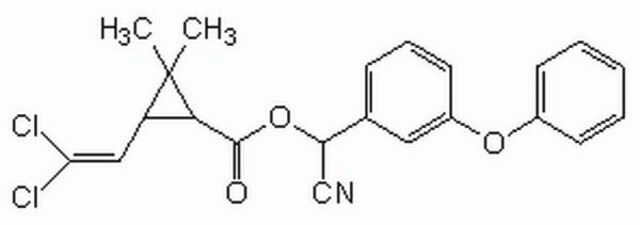306568
Hydroxyde de potassium
semiconductor grade, pellets, 99.99% trace metals basis (Purity excludes sodium content.)
Synonyme(s) :
Potasse caustique
About This Item
Produits recommandés
Qualité
semiconductor grade
Niveau de qualité
Pression de vapeur
1 mmHg ( 719 °C)
Essai
99.99% trace metals basis (Purity excludes sodium content.)
Forme
pellets
Composition
KOH, >85.0%
Impuretés
15% water
pH
~13.5 (25 °C, 5.6 g/L)
Pf
361 °C (lit.)
Traces de cations
Na: ≤500.0 ppm
Chaîne SMILES
[OH-].[K+]
InChI
1S/K.H2O/h;1H2/q+1;/p-1
Clé InChI
KWYUFKZDYYNOTN-UHFFFAOYSA-M
Vous recherchez des produits similaires ? Visite Guide de comparaison des produits
Catégories apparentées
Description générale
Application
- As a base in the synthesis of imines, starting from amines and alcohols.
- As a base in β-alkylation of secondary alcohols with primary alcohols without any transition metal catalyst.
- In combination with aluminium for pinacolization of aromatic aldehydes and reduction of hindered ketones.
- As a precipitating agent in the synthesis of MnZn ferrites nanoparticles (Mn0.8Zn0.2Fe2O4 ferrite nanoparticles) by modified hydrothermal method.
Mention d'avertissement
Danger
Mentions de danger
Conseils de prudence
Classification des risques
Acute Tox. 4 Oral - Eye Dam. 1 - Met. Corr. 1 - Skin Corr. 1A
Code de la classe de stockage
8A - Combustible corrosive hazardous materials
Classe de danger pour l'eau (WGK)
WGK 1
Point d'éclair (°F)
Not applicable
Point d'éclair (°C)
Not applicable
Faites votre choix parmi les versions les plus récentes :
Déjà en possession de ce produit ?
Retrouvez la documentation relative aux produits que vous avez récemment achetés dans la Bibliothèque de documents.
Les clients ont également consulté
Notre équipe de scientifiques dispose d'une expérience dans tous les secteurs de la recherche, notamment en sciences de la vie, science des matériaux, synthèse chimique, chromatographie, analyse et dans de nombreux autres domaines..
Contacter notre Service technique





